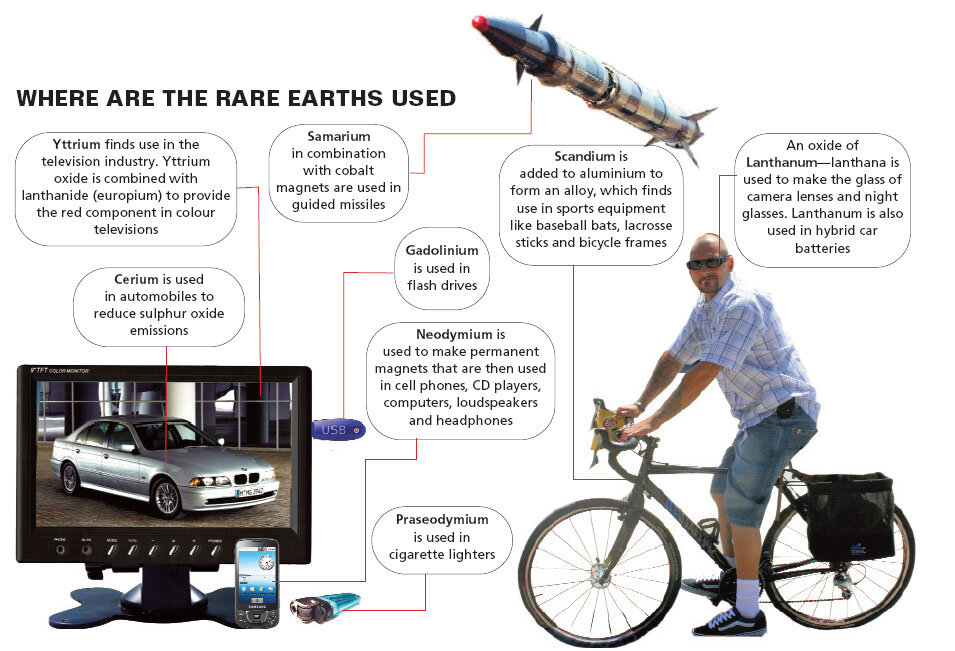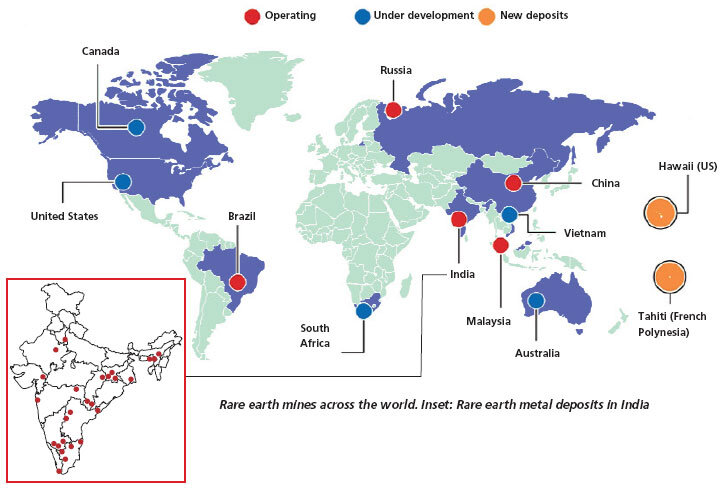Rush for Rare Earths | 09 May 2019
Why in News?
The Union Ministry of Environment, Forest and Climate Change (MoEF&CC) agreed to a request by the Ministry of Mines (MoM), seeking that clearances to private companies for mining beach sand minerals(rare earth minerals) be stopped.
What are rare earth minerals?
- Rare earths are a series of chemical elements found in the Earth’s crust that are vital to many modern technologies, including consumer electronics, computers and networks, communications, clean energy, advanced transportation, health care, environmental mitigation, national defense, and many others.
- Because of their unique magnetic, luminescent, and electrochemical properties, these elements help make many technologies perform with reduced weight, reduced emissions, and energy consumption; or give them greater efficiency, performance, miniaturization, speed, durability, and thermal stability.
- Along with these one other important constituent of beach sand mineral is Monazite. Monazite is the primary ore for thorium, a nuclear fuel. Its presence brings beach sand mining under the Atomic Minerals Concession Rules.
Mining rules for atomic mining
- The State Governments were given permission to grant mineral concessions, where Monazite is less than the prescribed threshold values (00.75%), to the private sector by auction or competitive bidding, in accordance with the Atomic Minerals Concession Rules, 2016.
- However, in a notification this threshold limit was reduced to 0%.As monazite is found in various concentrations in all the beaches, this amendment essentially meant a ban on mining by private companies.
Problems caused by beach sand mining
- Destruction of natural beaches and the ecosystems they protect (e.g. dunes, wetlands),
- Habitat loss for globally important species (e.g. turtles, shorebirds),
- Destruction of nearshore marine ecosystems,
- Increased shoreline erosion rates, reduced protection from storms, tsunamis, and wave events,
- Economic losses through tourist abandonment and loss of coastal aesthetics
How is the mining industry regulated?
- The mining industry is regulated both at the central and state level.
- The states have the power to regulate mines and mineral development. However, this power is subject to the federal laws and regulations on mining.
- Minerals are classified into two types – major and minor. All State governments have the power to frame policy and regulate the exploration, extraction and processing of all minor minerals such as building stones, clay and sand.
- Minerals (other than the minor minerals) are automatically classified as major minerals. The Central government has the power of revision, fixing of royalty, issuing regulations, etc, in respect of major minerals. Metallic minerals are largely classified as major minerals.
- The Central government also has ownership over all offshore minerals (ie, minerals extracted from the sea or ocean floor in the Indian maritime zones such as the territorial waters, continental shelf and exclusive economic zones). The central government has the right to allot concessions and collect royalty for mining offshore minerals.


